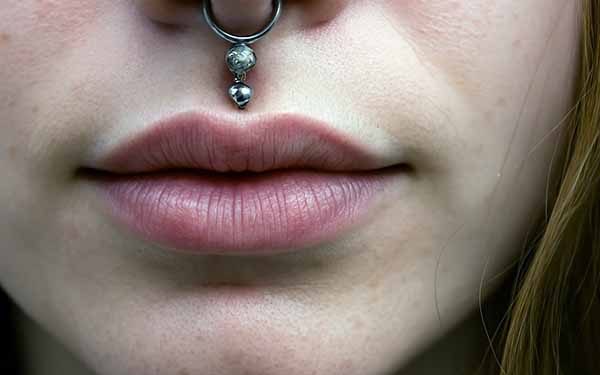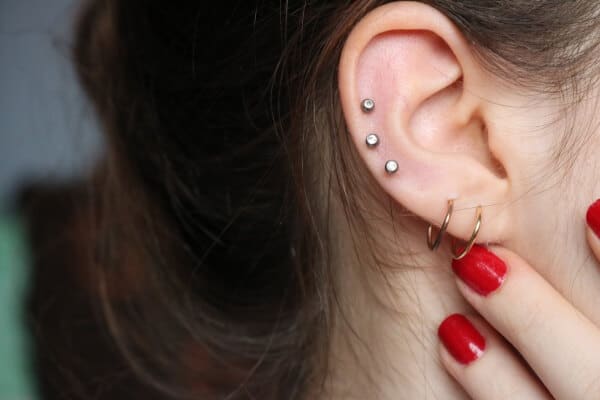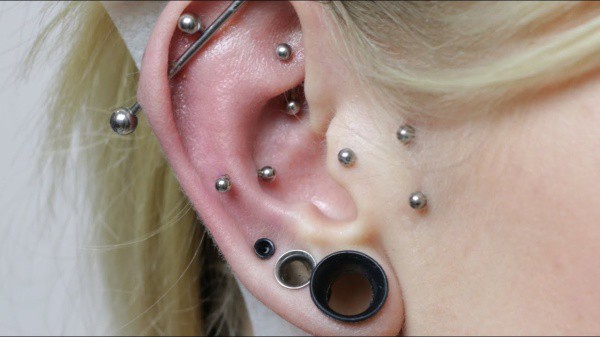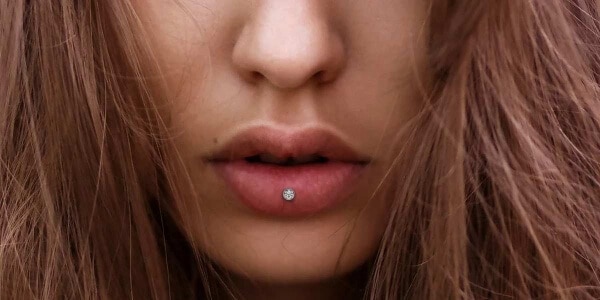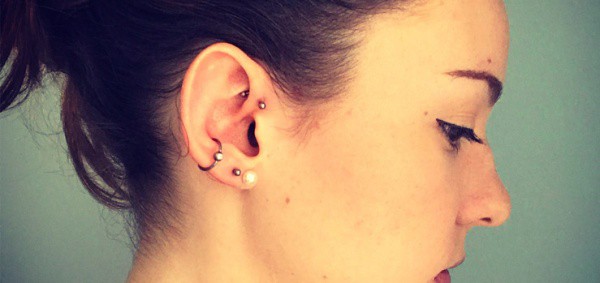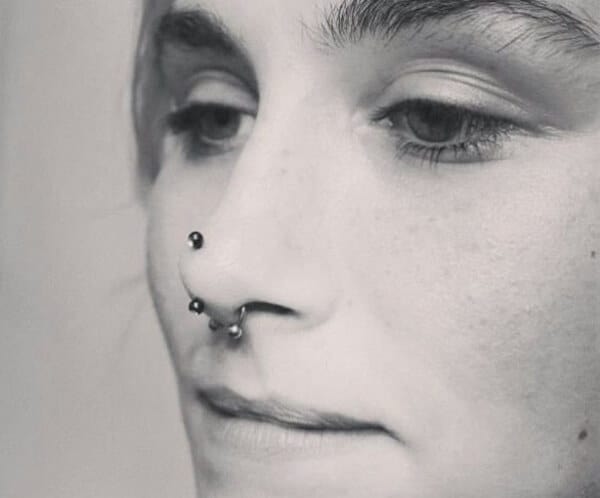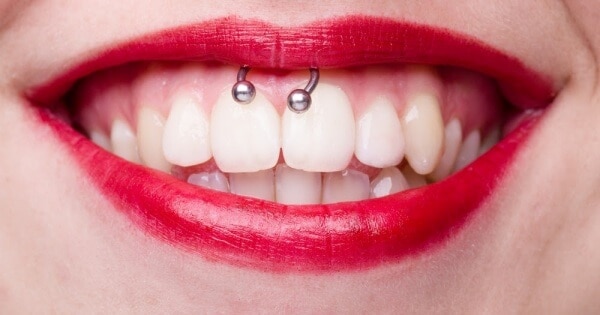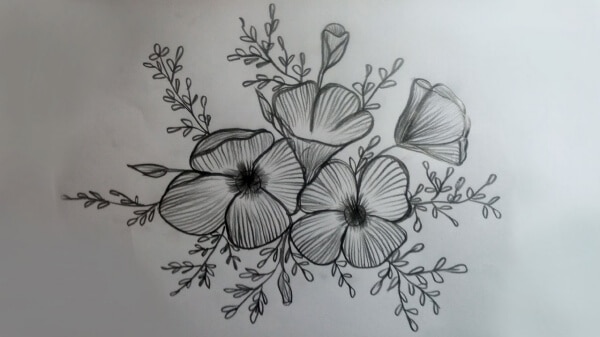1. Understand the Anatomy of Your Philtrum
- Locate the Philtrum and One Vertical Point
- The philtrum is the groove that runs vertically from your nose to your upper lip.
- A jestrum piercing (called a vertical medusa piercing, vertical labret piercing, or vertical lip in some circles) is specifically positioned at the philtrum, directly inside your mouth and just above the middle of your upper lip.
- Often philtrum piercing is confused with a medusa piercing, yet the jestrum goes vertically, forming a distinct curve through two piercing points A known as the vertical medusa has a different structure instead of the single entrance of a standard piercing.
- Appreciate the Anatomy and Aesthetics
- Since this piercing threads vertically, it traverses delicate tissue both “above” and “below” the lip line.
- Understanding the anatomy helps you visualize how the barbell (or curved barbell) will exit and enter your skin, creating that coveted visual effect.
- Knowing your facial structure ensures you avoid nerve-rich zones and reduces the risk of rejection.
2. Choose an Experienced Piercer
- Research an Experienced Piercer
- A jestrum piercing requires specific expertise: look for an experienced piercer who’s familiar with vertical piercings.
- Read reviews and ask friends for referrals to find someone who has consistently delivered a comfortable experience without provoking allergy or irritation.
- Consultation: Mapping Piercing Points
- During the piercing process, a skilled piercer will map out precise piercing points to ensure symmetry.
- Be sure to discuss your pain tolerance and any history of allergy or previous lip piercing complications. Understanding your level of pain beforehand helps you mentally prepare for the associated pain and piercing pain.
- Avoid Risk of Rejection
- A professional will evaluate tissue thickness so that your jestrum piercing sits flush—avoiding shallow angles that can irritate or lead to rejection.
- They’ll also advise if a vertical medusa is even anatomically suitable for you; not everyone’s philtrum can support this type of vertical lip jewelry.
3. Select High-Quality Piercing Jewelry
- Choose Implant-Grade Titanium or Surgical Steel
- High-quality materials like implant-grade titanium minimize the risk of complications and allergic reactions.
- Look for jewelry labeled lip jewelry, labret, or barbell specifically designated for oral piercings. Avoid cheap alternatives that can cause prolonged irritation.
- Opt for a Curved Barbell or Labret Stud
- A curved barbell or labret piece provides comfort around the piercing and sits naturally with your facial anatomy.
- Jestrum piercing jewelry often features a small bead, gemstone, or stud on the visible end—an accessory that adds sparkle to your upper lip.
- Gemstone vs. Bead vs. Stud
- A gemstone-tipped barbell can emphasize your aesthetics, but ensure the finish is smooth to avoid snagging.
- A simple bead or sleek stud might be more discreet if you plan to wear makeup or have work regulations to follow.
4. The Piercing Process: From Consultation to Completion
- What You’ll Need Before the Piercing
- Prioritize hydration and a light meal to stabilize your pain tolerance.
- Bring any previous medical flag-ups, like a history of allergy to metals, so your piercer can choose the right implant-grade titanium.
- Piercing Goes Like This
- First, your piercer will sterilize the area with a medical-grade antiseptic.
- They’ll mark the philtrum entry and exit with dots, ensuring the curve of the piercing aligns with the natural curve of your upper lip.
- A sterilized hollow needle will pierce vertically, creating an exit hole inside your mouth and an entrance point on the lip’s surface (mouth-borne end).
- Associated Pain and Jestrum Piercing Pain
- You may experience a brief spike of piercing pain as the needle goes through; it’s often likened to a sudden pinch or sting.
- Since the philtrum is less fleshy than other areas, some people report a sharper sensation—but it’s quick.
- Once the labret or barbell is in place, residual throbbing may linger, but it usually subsides rapidly if you breathe steadily.
5. Navigating Aftercare and the Jestrum Piercing Healing Process
- Initiate Aftercare Practices Immediately
- Within hours, your jestrum piercing healing officially begins. During the healing period, which can last up to 12 weeks, you’ll need to treat it with the utmost attention.
- Aftercare includes rinsing with saline solution or using a saline solution spray. A mild mouthwash without alcohol is ideal to maintain oral hygiene without drying out the area.
- Daily Habits That Impact Healing
- Avoid foods that can snag or irritate—think spicy foods, crunchy chips, and sticky candy. These can get in the way of the site and prolong your healing process.
- Maintain daily habits that support cleanliness: brush your teeth and gums gently and rinse after meals to remove debris around the piercing.
- Handling Swelling and Irritation
- A bit of swelling is normal. Ice packs can help reduce puffiness but never place ice directly on the piercing itself.
- If you notice irritation or redness past a few days, be mindful of what products you’re using. Avoid harsh chemicals (like some facial cleansers) and be cautious with makeup around the site.
- When Piercing Heals and When It Doesn’t
- Typically, a jestrum piercing heals close to 12 weeks if you follow meticulous daily habits and proper aftercare practices.
- If your piercing starts to reject or develop a bump, it might mean the jewelry is too short, or your body is pushing it out. That’s the dreaded risk of rejection—but a well-chosen length and material often stave it off.
6. Troubleshooting Common Issues
- Irritation and Prolonged Healing
- If the piercing begins to irritate or seems swollen beyond the initial healing, examine whether you might be brushing or flossing too aggressively.
- Sometimes chewing gum or foods can irritate the philtrum from the inside, especially since the jewelry is mouth-borne. Be mindful of your chewing motions.
- Signs of Rejection or Allergy
- A reddened area or a migrating exit site could signal you’re experiencing a risk of rejection or an allergy to your piercing jewelry.
- Swap to a different metal—like swapping nickel-laced steel to implant-grade titanium—and see if irritation improves. If not, cease wearing any accessory and consult an experienced piercer.
- Pain That Won’t Let Up
- Jestrum piercing pain should taper within a week or two. If you still feel throbbing beyond the initial month, be cautious: infection might be settling in.
- Pay attention to increased heat, pus, or unusual color changes. These can all be red flags demanding prompt attention.
7. Maintaining Your Jestrum Piercing Aesthetics
- Mindful Makeup Around the Area
- Teaching yourself to apply makeup around your jestrum carefully will prevent pressing too hard or scraping off your barbell.
- Keep your cosmetics free of oils or fragrances near the philtrum to avoid unwanted irritation.
- Protecting Proximity to Daily Products
- Avoid proximity to harsh face creams or lip balms with aggressive ingredients. The slightest contact can irritate the area.
- If you love wearing minimalistic lip jewelry, consider a small stud or bead that doesn’t snag scarves, helmets, or seat belts.
- Enjoy the Visual Effect and Guard Against Bumps
- Once fully healed (i.e., after roughly 12 weeks), you’ll gravitate toward showing off your vertical medusa because the contrast between your upper lip and a sparkling gemstone is truly eye-catching.
- Still, be cautious with tight masks, certain masks—and anything that might press against the philtrum.
8. When to Seek Professional Help
- Healing Takes Longer Than Expected
- If the healing period extends well beyond 12 weeks, or if your piercing seems to take longer to settle, it’s sure to talk to a professional.
- A leaky or constantly sore hole might mean your body isn’t accommodating the labret or barbell properly.
- Experiencing Persistent Pain or Rejection
- Persistent piercing pain or noticing swelling and migration at the exit point suggests either a mild infection or gradual rejection.
- Don’t hesitate—consult the same experienced piercer you used initially; they can adjust your jewelry length or swap to a different material.
- Questions About Upgrading Jewelry
- As your jestrum piercing heals, you might crave a unique accessory, like a colored gemstone or a playful bead.
- Your piercer can guide you on choosing a high-quality piece that flatters your mouth’s anatomy without introducing allergy risks.
9. Style Your Jestrum Piercing with Confidence
- Experiment with Your Look
- The unique aesthetics of a jestrum piercing allow for incredible versatility. Once fully healed, you can swap your standard bead for a dazzling gemstone to match your outfit or mood.
- Consider the overall balance of your facial features. A smaller stud might complement other facial piercings, while a statement piece can stand beautifully on its own.
- Long-Term Oral Health
- Even after the initial healing process is complete, maintain good oral hygiene. Continue to rinse your mouth after eating to keep the internal exit point clean and free from debris.
- Be mindful that your jestrum piercing jewelry is a permanent part of your oral environment. Regular check-ups with your dentist should include a quick look to ensure it’s not affecting your teeth and gums.
- Embracing the Journey
- From the decision to pierce to the day you finally feel it’s fully healed, owning a vertical philtrum piercing is a journey. It’s a commitment to a piece of body art that enhances your personal aesthetics.
- If any aspect of aftercare seems to take longer than expected, don’t get discouraged. Patience and consistent care are the keys to enjoying your stunning vertical medusa for years to come.
More Jestrum Piercing Jewelry and Vertical Philtrum Piercing Gallery
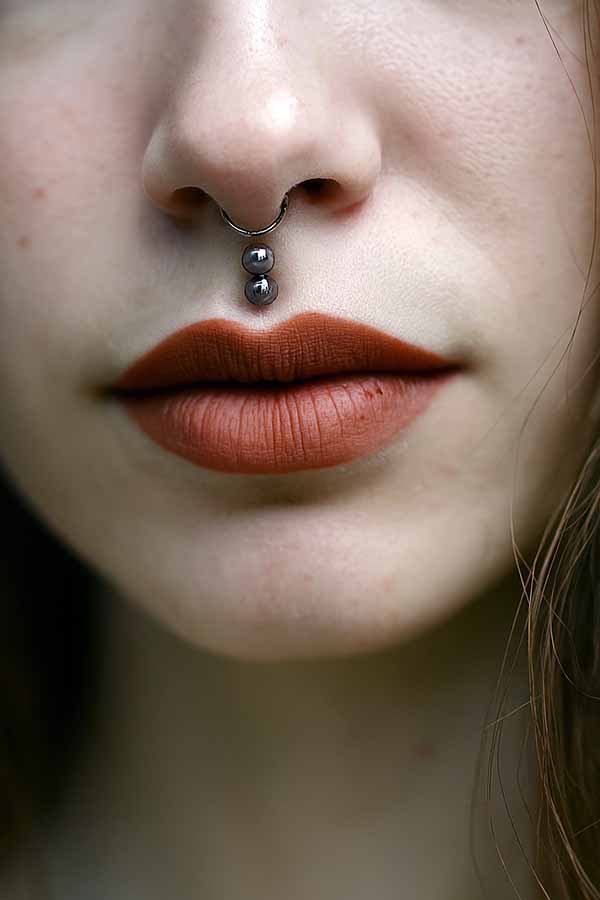


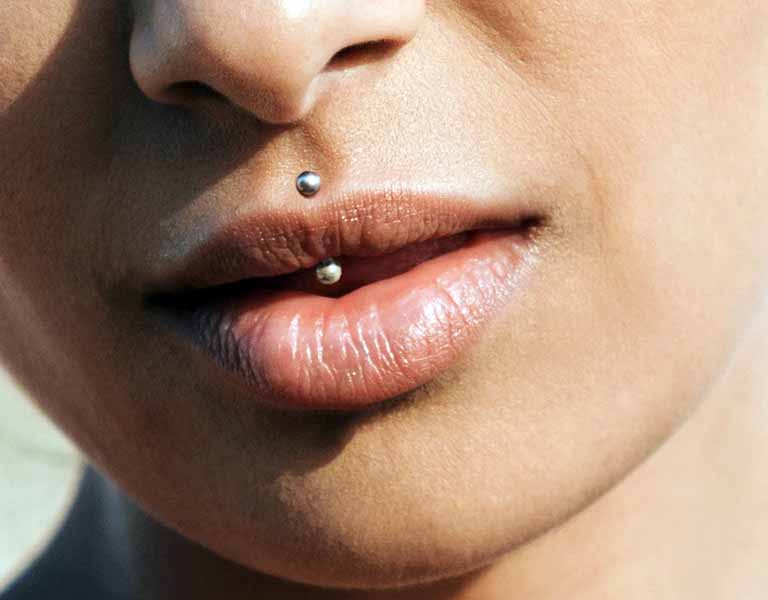
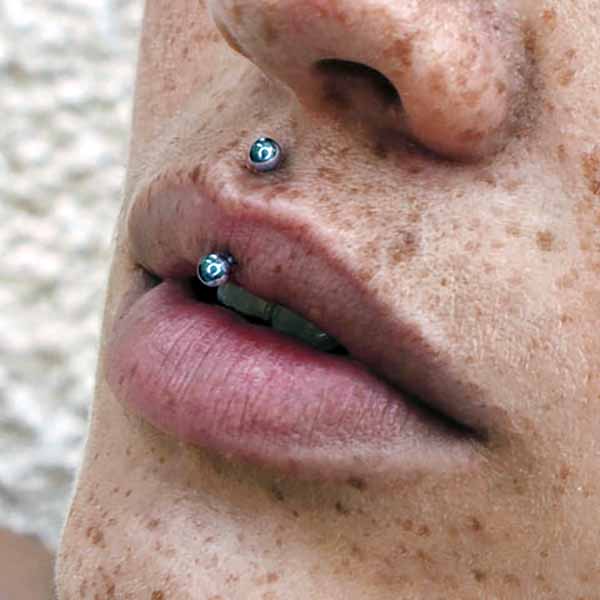

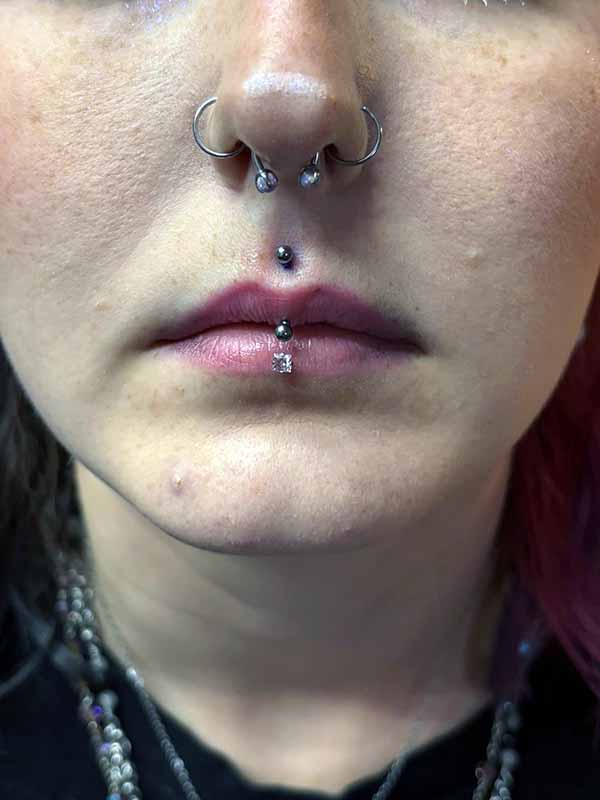


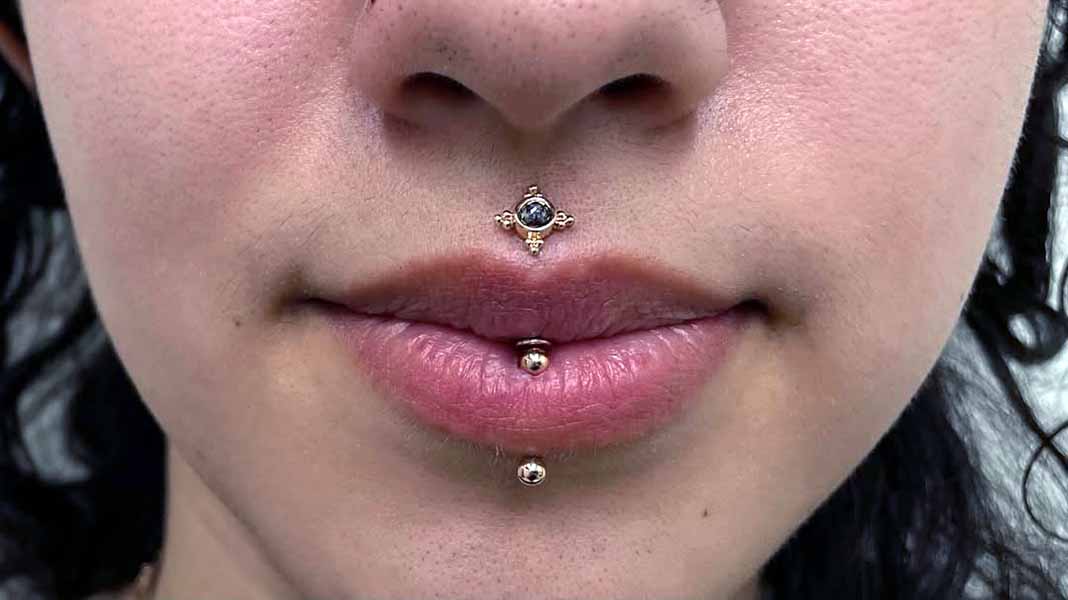
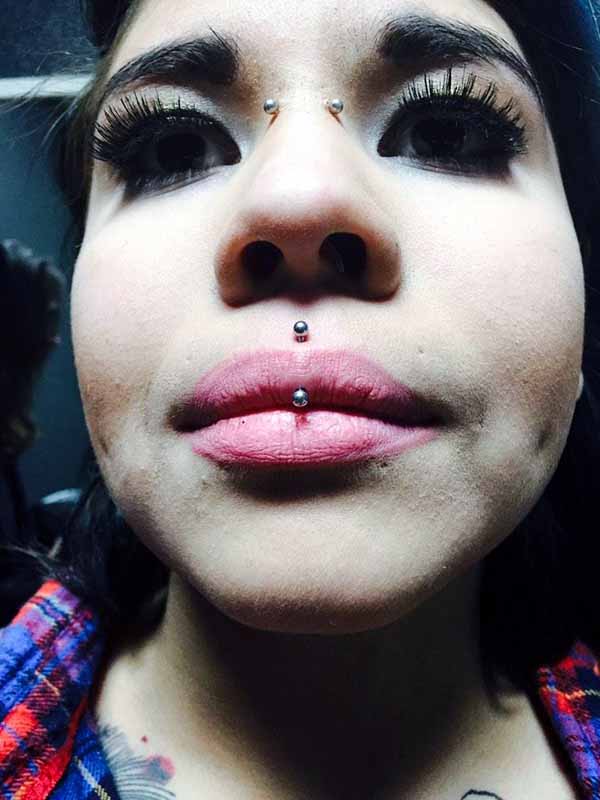
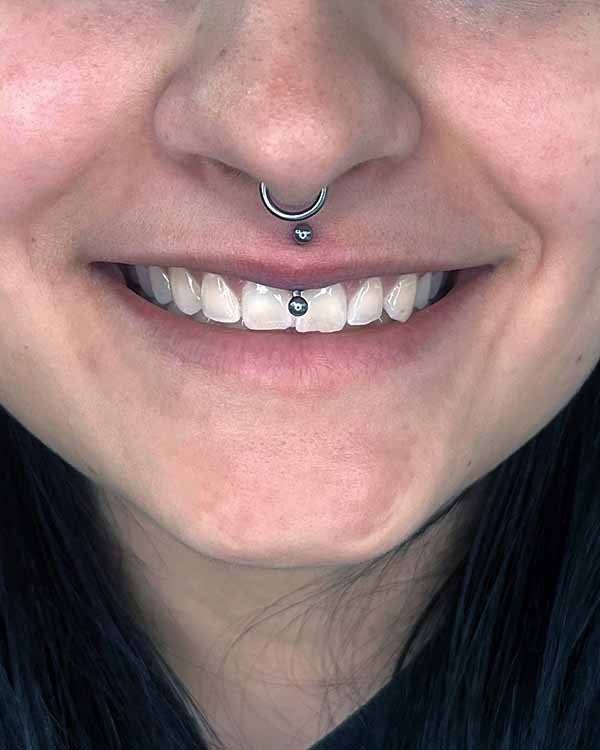



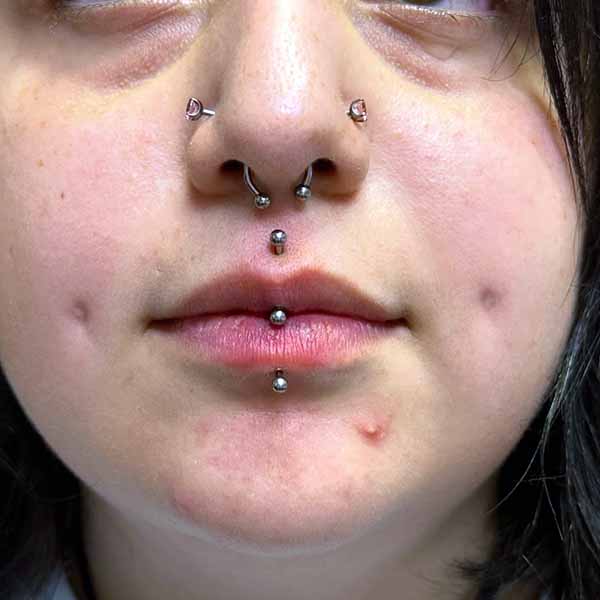





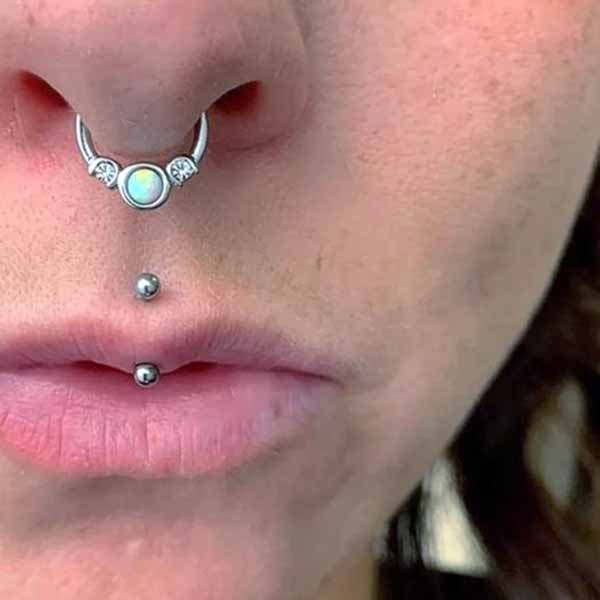







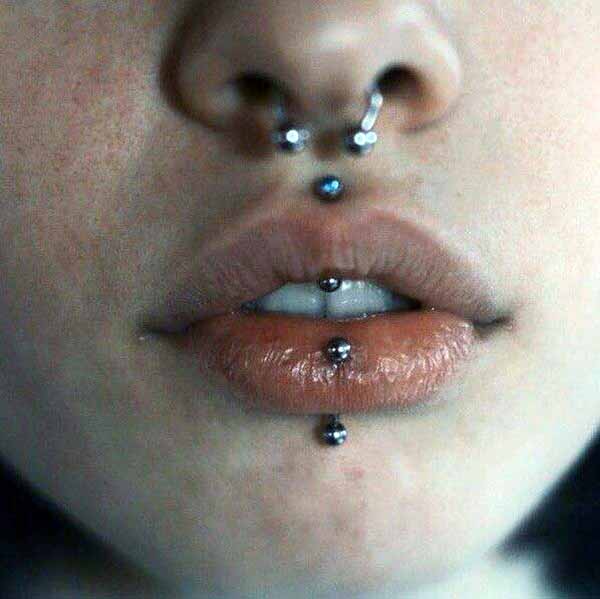


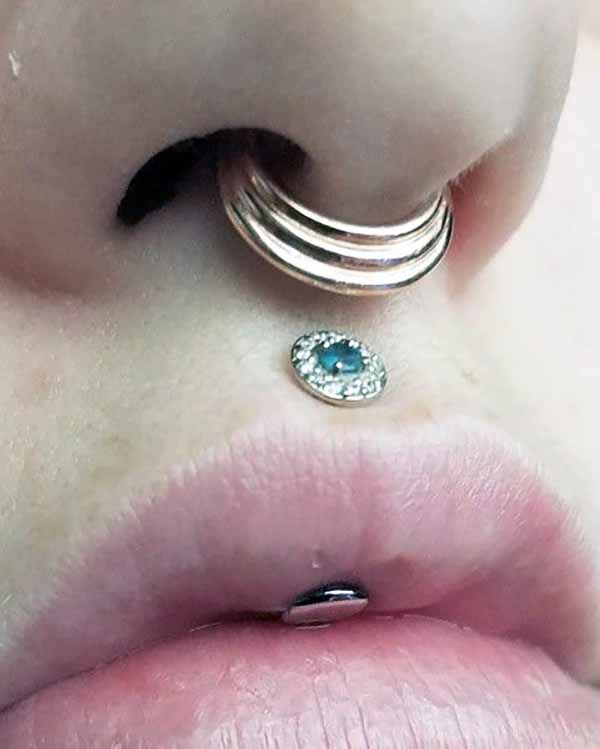
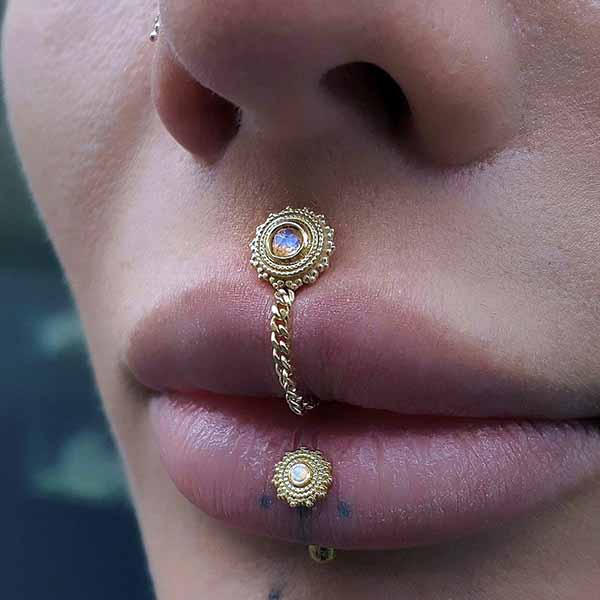





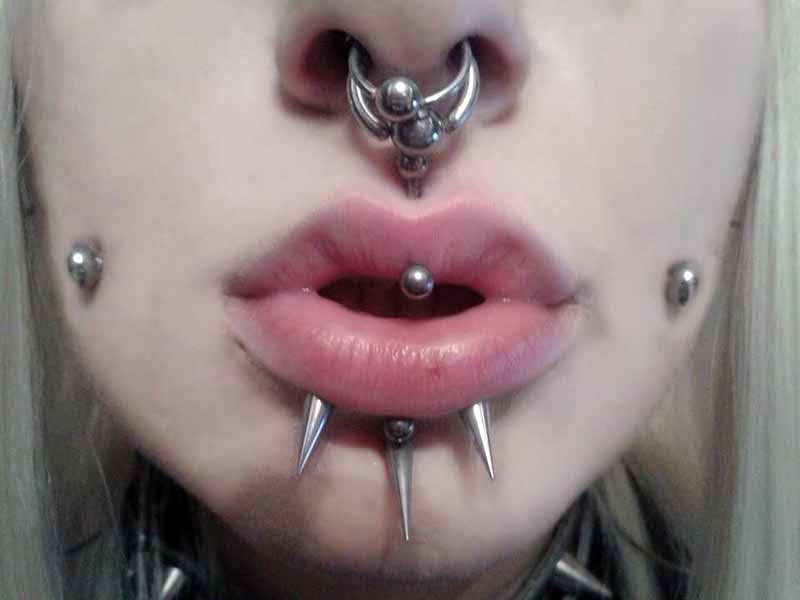
Conclusion
From understanding the intricate anatomy of your philtrum to mastering meticulous aftercare practices, your journey with a jestrum piercing is one of transformation and style. This unique vertical piercing, whether you know it as a vertical medusa or a vertical philtrum piercing, demands attention to detail. By choosing an experienced piercer and high-quality piercing jewelry like a curved barbell or labret stud, you lay the foundation for success. Navigating the piercing process and its associated piercing pain is just the beginning. The true commitment lies in the healing process. A healing period of 12 weeks requires diligent oral hygiene, using a saline solution, and adapting your daily habits to avoid irritation and the risk of rejection. But the result—a fully healed, eye-catching accessory that highlights your upper lip—is worth every effort. Remember, if challenges like prolonged swelling or pain arise, always be sure to talk to your piercer. Now, equipped with comprehensive knowledge, you are ready to confidently rock this bold and beautiful expression of self.
FAQs
Q: What is a jestrum piercing?
A: A jestrum piercing is a unique vertical philtrum piercing that goes through the center of the philtrum, the area between the upper lip and the nose. This piercing is also known for its aesthetic appeal, as it complements the facial features beautifully.
Q: How do I care for my jestrum piercing?
A: Proper care of your piercing is essential to ensure it heals correctly. Clean the area with a saline solution or an antiseptic recommended by your piercer, and avoid touching it with dirty hands. Additionally, make sure to follow any specific aftercare instructions provided during the piercing process.
Q: What are the typical healing times for a jestrum piercing?
A: The healing time for a jestrum piercing can vary, but it typically takes about 6 to 8 weeks to heal completely. During this time, it’s crucial to maintain proper care and avoid changing the jewelry too soon.
Q: Is a jestrum piercing painful?
A: Like any piercing, the pain level can vary from person to person. Many find that the jestrum piercing pain is manageable and lasts only for a short time during the procedure. Afterward, any discomfort can usually be alleviated with over-the-counter pain relief.
Q: What type of jewelry is best for a jestrum piercing?
A: Jestrum piercing jewelry should be made of high-quality materials such as titanium or surgical steel to minimize the risk of irritation or infection. Options include curved barbells or studs, which can enhance the aesthetic of the piercing.


